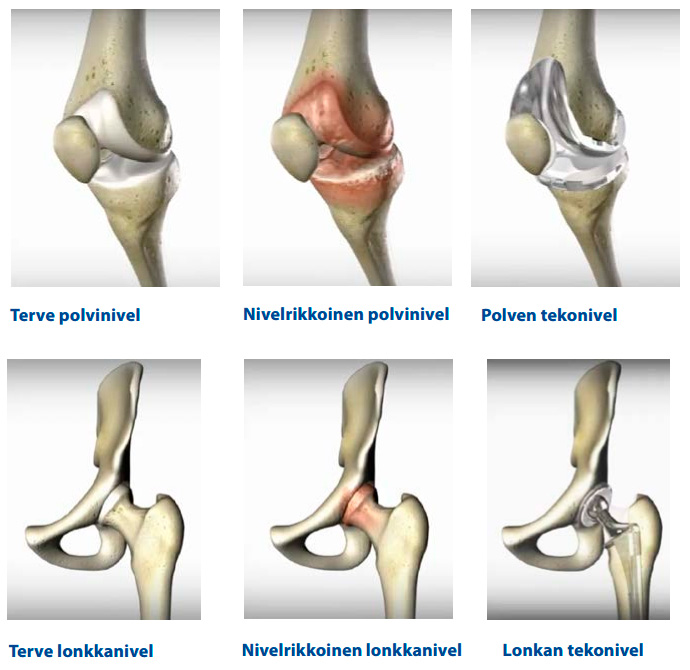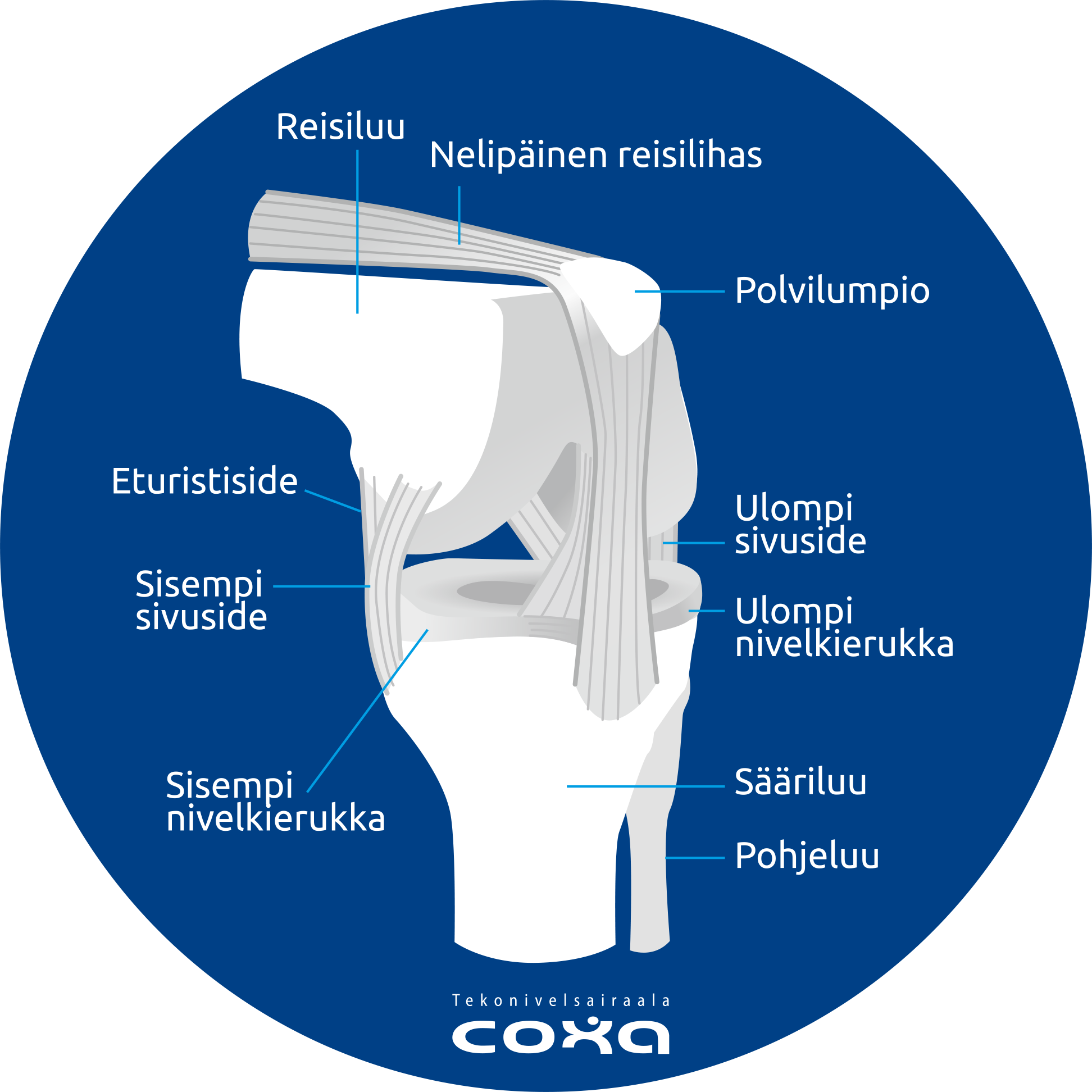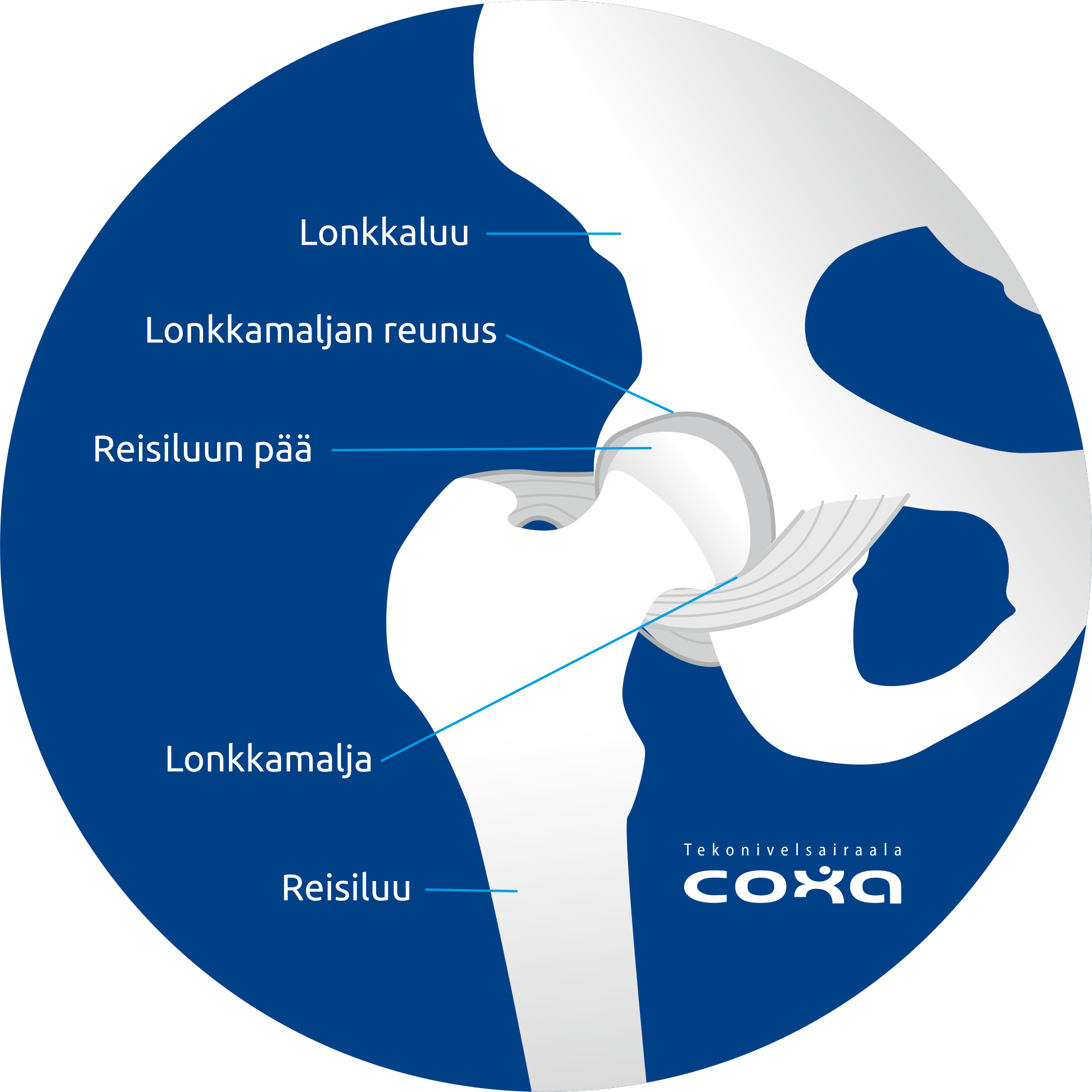Osteoarthritis
The most common reason for joint replacement surgery is arthrosis or osteoarthritis. It is the most common joint disease and occurs in almost all people as a result of ageing. Changes tend to progress slowly over the years. In osteoarthritis, more cartilage disappears from the joint than is being formed. The surface of the articular cartilage can get damaged and wear out, allowing the bones to rub against each other. The irritation causes the synovial layer to become irritated, to start swelling and to become stiff. The human body is unable to repair the damaged articular cartilage itself. Osteoarthritis manifests as throbbing pain that worsens when moving and is often relieved at rest. Also, morning stiffness and stiffness when starting to walk are typical symptoms.
Risk factors for osteoarthritis
- Excess weight
- Genome
- Injuries to joints and ligaments
- Limb position errors
- Physically taxing work
Ageing weakens the mechanical properties of the articular cartilage and the metabolism of the tissues. These expose the articular cartilage to damage.
Symptoms of knee osteoarthritis
- Knee osteoarthritis causes pain in the knee. The knee may ache when walking on hard ground, such as asphalt. It may also be sore after a run.
- Knee pain can prevent you from engaging in activities where your knee is subject to impacts or sudden stops. Examples of such sports include running, tennis, badminton and football.
- As the knee osteoarthritis develops further, climbing and descending stairs may become difficult. Descending them is especially difficult. You may have to descend one step at a time sideways like a crab.
- Osteoarthritis also stiffens the knee joint. Your leg will not bend like it used to. You are not able to touch your buttock with your heel, and your knee may not straighten fully when walking.
- You may also have to move around to find a comfortable sleeping position and place, for example, a pillow under your knee to avoid pain.
Symptoms of hip osteoarthritis
- In the case of hip osteoarthritis, the hip becomes stiffer. It may be difficult for you to cut toenails because it is difficult to bend your leg and your hip does not rotate to the side. Low-seated cars and sofas are challenging when sitting down and getting up.
- The hip is sore, but the pain, however, is often not felt in the side of the hip, as you might think. Instead, the groin aches, and the pain often radiates to the thigh. Even your knee may ache. Actually, a lot of people come to the surgery because they have pain in their thigh or knee.
- In the early stages of hip osteoarthritis, pain is typically felt during or after exertion. As osteoarthritis progresses, the pain may become constant.
- When cartilage disappears from the hip joint, the leg may become shorter. Which, in turn, can lead to limping. The leg may also rotate outwards with the toes pointing outwards rather than straight ahead.
Exercise is medicine
Exercise is the key form of treatment for osteoarthritis, but any sports causing hard impacts should be avoided. Exercise lubricates joints like oil on the door hinge.
- Remember that your joint is not broken, and you cannot break it yourself or make osteoarthritis worse. Therefore, no form of exercise or carrying heavy objects is prohibited. Everything you do to strengthen your muscles is good for you, if you are able to do it.
- Sports that are especially friendly for joints include walking, cycling, water running, aquagym, swimming, cross-country skiing and skating.
- Head to the gym, if you can. Rowing and cycling ergometer training suit most people. Strengthening the thigh muscles can reduce the pain felt in the knee, as strong muscles reduce the stress on the knee joint.
- Stretching and extending your legs and arms with, for example, a resistance band activates movement and lessens joint stiffness.
Sufficient rest is important to counterbalance exercising.
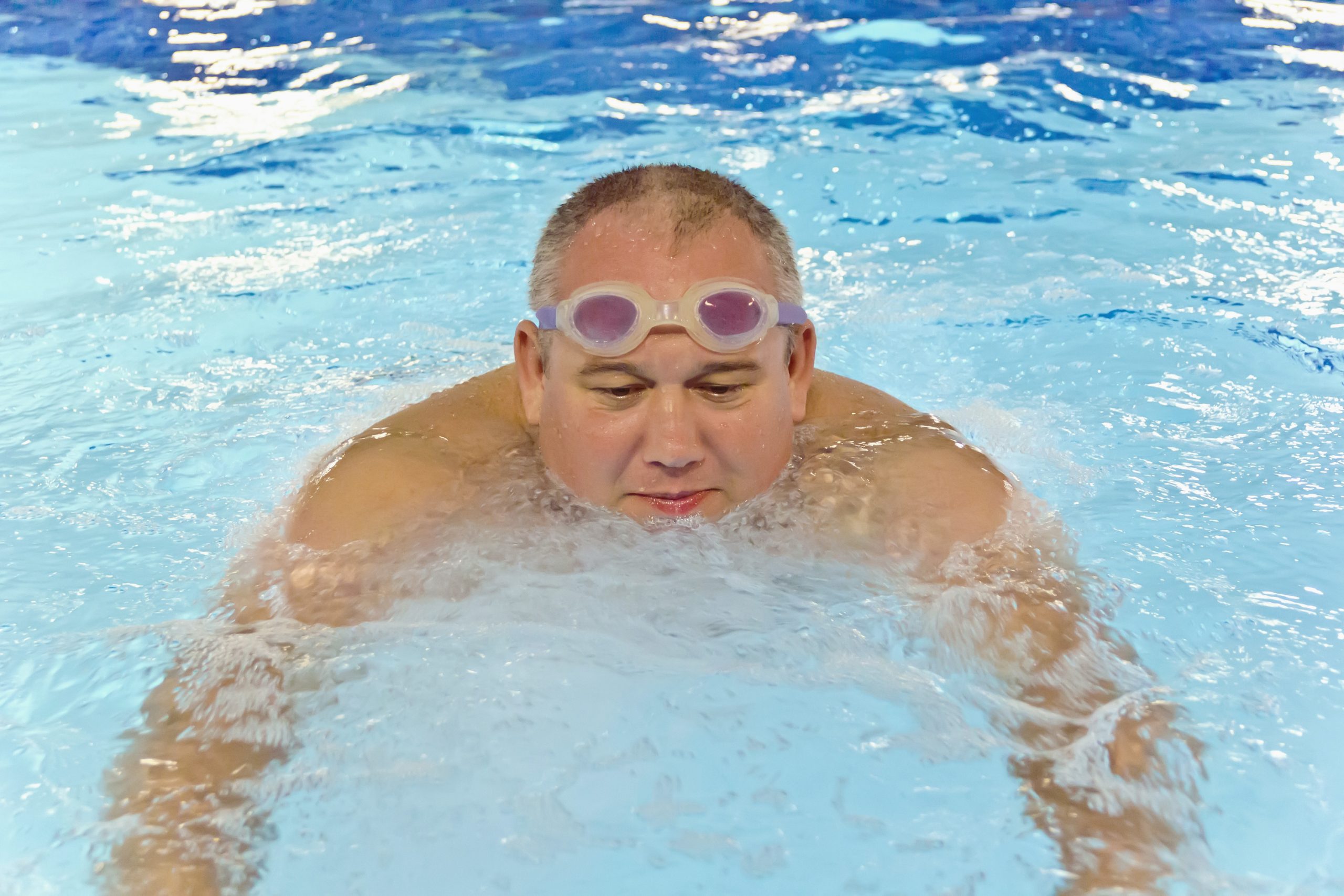
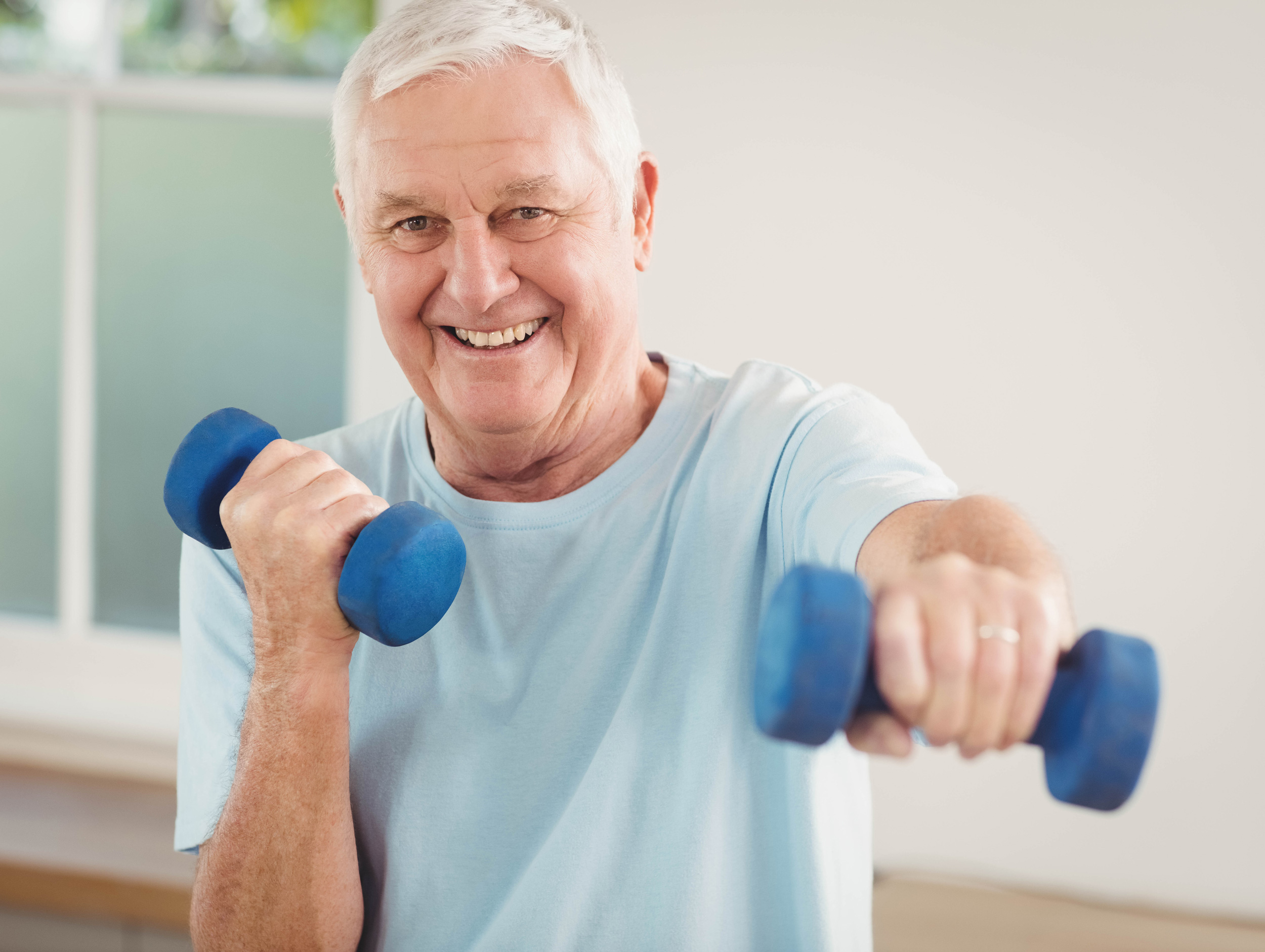
Lighten the load on the joint
Excess weight is a great risk factor for osteoarthritis. Losing just a few kilos can reduce the risk of contracting the disease significantly. According to current knowledge, exercise will not cure or stop a diagnosed case of osteoarthritis, but it can help treat and alleviate symptoms, e.g., via improved muscle tone and weight management.
Good ergonomics is good treatment for osteoarthritis because most of us are impacted by, for example, the height of the working surface and our sitting posture every day for several hours.
The range of mobility equipment is extensive, varying from shoe heel pads to wrist supports and from forearm crutches to rollator walkers. You should heed the advice of your doctor or physiotherapist to ensure that the mobility equipment correctly supports your moving.
Medication – what helps?
Temporary relief from osteoarthritis may come in the form of cold or warm compress or gel without any medicinal substances. At first, the pain can also be alleviated by using pain relief gel available from the pharmacy without a prescription.
The primary choice in oral medicine is stomach-friendly paracetamol. It does not strain the intestines as much as actual anti-inflammatory drugs, but it often helps reduce osteoarthritis pain. If paracetamol is of no help, you can discuss anti-inflammatory drugs with your doctor. The course length is usually 7–10 days.
The doctor can inject the joint with cortisone approximately three times a year, which may numb the osteoarthritis pain for several weeks. Unlike cortisone, hyaluronate is a substance found naturally in our body. Doctors administer it as a series of intra-articular injections. The effect varies, but many patients have found that the set of injections has alleviated their osteoarthritis pain for several months.
Pain in fingers can be treated with pain relief creams that include an anti-inflammatory drug. Rest pain is occasionally also treated with mild opiates, such as codeine or tramadol.
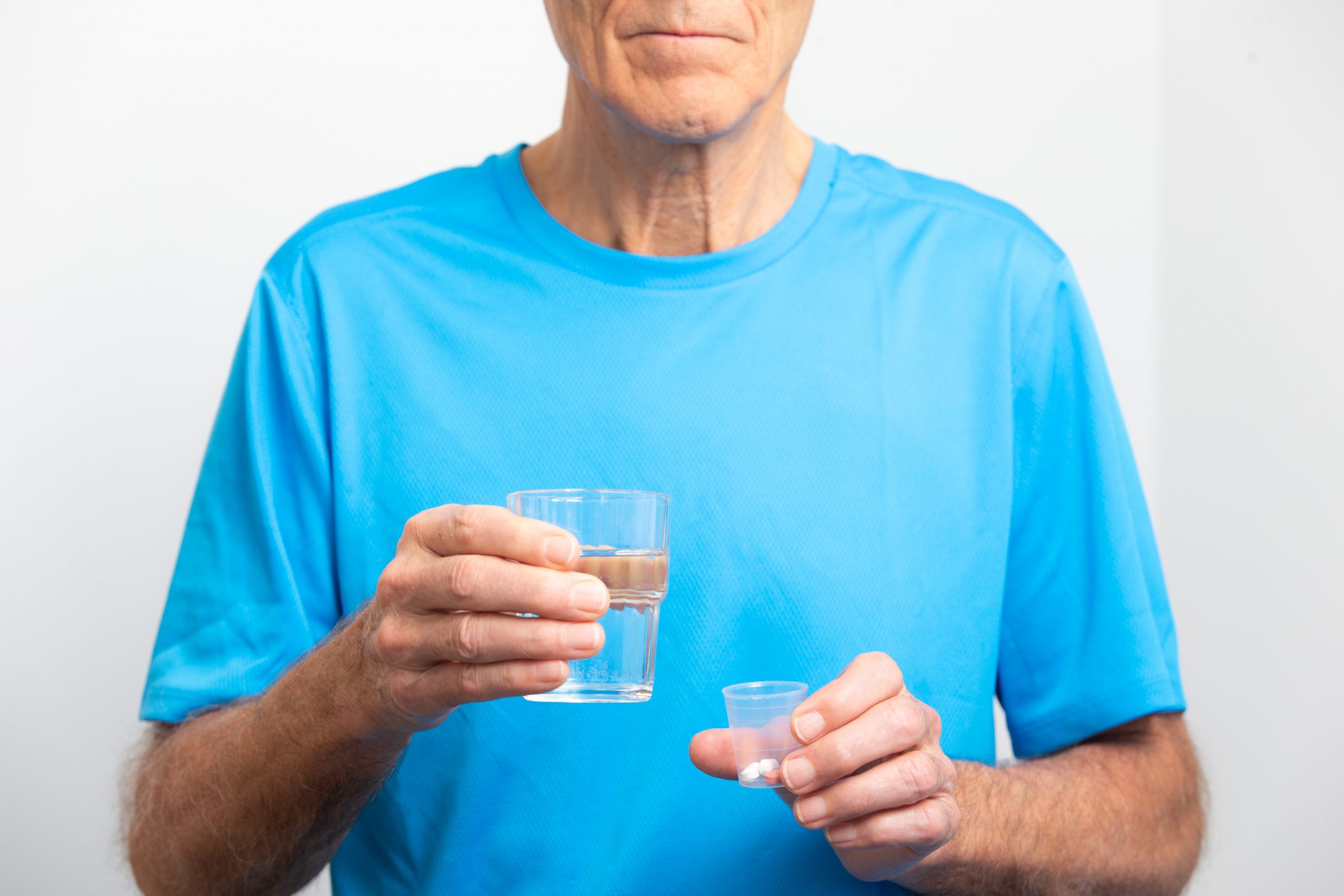
Surgery
When walking becomes unfeasible or the patient’s functional capacity is otherwise clearly reduced as a result of osteoarthritis and the above-mentioned treatments do not help, joint replacement surgery is the next course of treatment.
Read more When is the time to have joint replacement surgery?
Read more What kind of surgery is joint replacement surgery?
